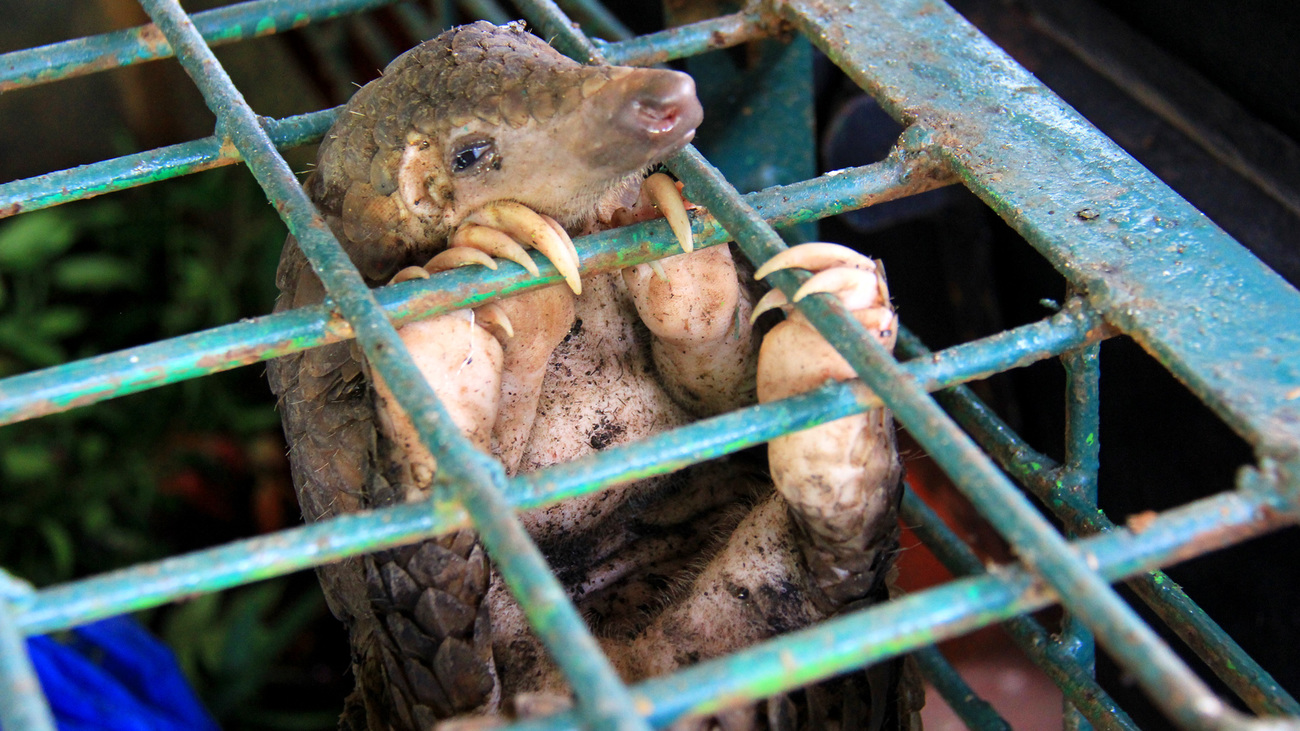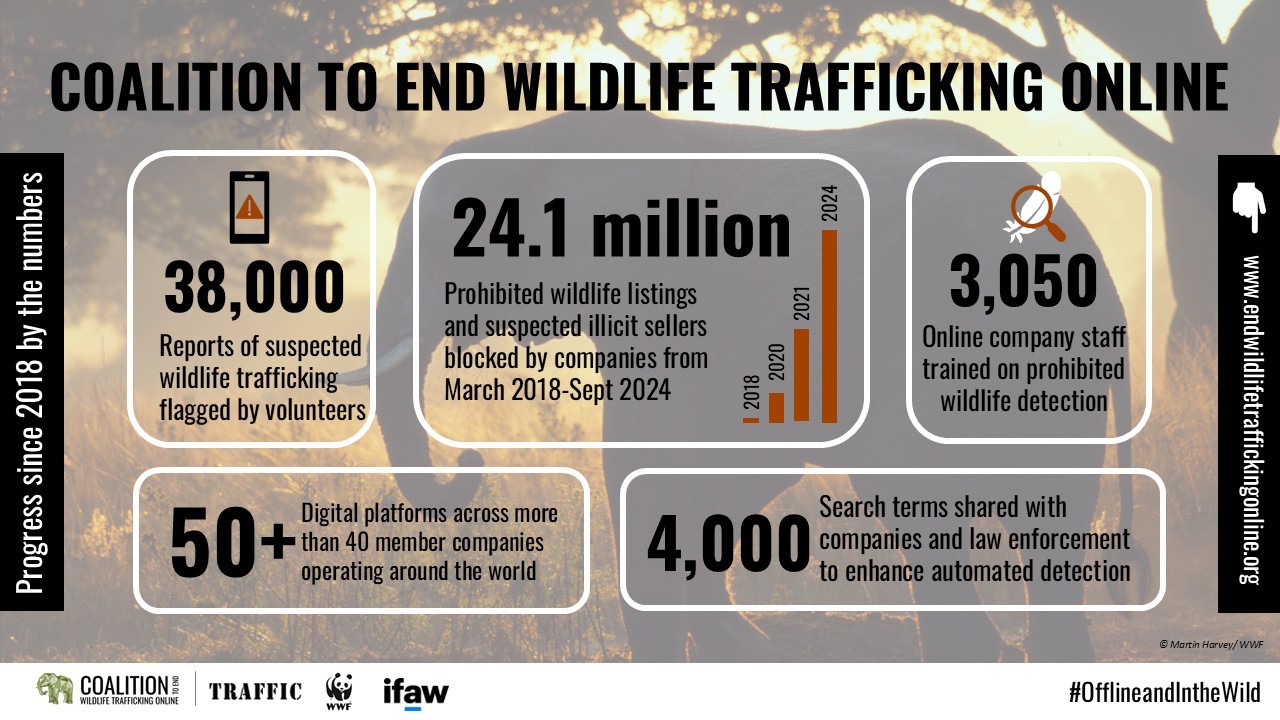Eugénie Pimont
Working together to stop wildlife trafficking online
Working together to stop wildlife trafficking online
Wildlife trafficking is a shadowy industry that hides in plain sight, exploiting the platforms many of us use daily. It threatens countless species, from pangolins and big cats to rare songbirds, pushing them closer to extinction. However, when we work together, we can stop the harm this criminal activity causes to animals.

Since its launch in 2018, the Coalition to End Wildlife Trafficking Online—convened by conservation organisations IFAW, WWF, and TRAFFIC—has been at the forefront of tackling illegal wildlife trade in the digital realm. Together with more than 50 of the world’s most influential tech companies, the Coalition is fighting to keep wildlife #OfflineAndInTheWild.
Six years of progress: 24.1 million actions to save wildlife
This December 2024, the Coalition is proud to spotlight some remarkable milestones. Since 2018, members have blocked or removed over 24.1 million prohibited wildlife listings and suspected illicit sellers. This figure includes 12.5 million actions taken since our last update in 2021 alone.

Taking down these online listings is a critical step in disrupting this cycle of harm. By removing illegal wildlife content, we reduce visibility and demand, making it harder for traffickers to market their products. At the same time, we diminish traffickers' profits, limiting their ability to reinvest in more poaching and trafficking operations.
How are we achieving this?
The Coalition’s efforts hinge on collaboration and innovation. To tackle the growing scale of online wildlife trafficking, we have:
- Trained over 3,000 company staff to detect and remove prohibited content.
- Identified 4,000+ search terms commonly used in illegal trade activities, greatly improving automated detection among tech companies and law enforcement.
- Encouraged 38,000 reports of suspected trafficking by volunteers
- Convened events and meetings with Coalition member companies to share lessons and best practices.
These efforts ensure traffickers have fewer places to hide as we standardise wildlife policies and strengthen automated tools to identify illegal listings.
Biodiversity at risk
The illegal wildlife trade is the second greatest threat to biodiversity after habitat destruction, devastating not only the species listed for sale but entire ecosystems. For every animal trafficked, countless others may suffer or die—whether captured alongside the target species, discarded as “bycatch,” or lost during transportation due to stress, injury, or neglect. In addition, traffickers often target the healthiest or most reproductively significant individuals, weakening wild populations and threatening their survival. The ripple effects extend far beyond the animals you see in online listings, destabilising ecosystems that rely on a delicate balance of species.
Yet, as wildlife trafficking moves increasingly online, platforms like search engines, e-commerce sites, and social media apps have become powerful allies in protecting wildlife.
How you can help
Stopping wildlife trafficking requires all of us to act. You can make a difference by reporting and encouraging others to report suspicious wildlife content—which can include live animals as well as bushmeat, bones, elephant ivory, rhino horn, and more—directly on apps and websites using their reporting features or via the Coalition’s dedicated reporting page here.
By working together, we can ensure that wildlife remains #OfflineAndInTheWild, protected from the threats of the online trade. To learn more, check out the latest progress update or visit the Coalition’s website and explore how your actions can help safeguard our planet’s incredible biodiversity.
Related content
Every problem has a solution, every solution needs support.
The problems we face are urgent, complicated, and resistant to change. Real solutions demand creativity, hard work and involvement from people like you.